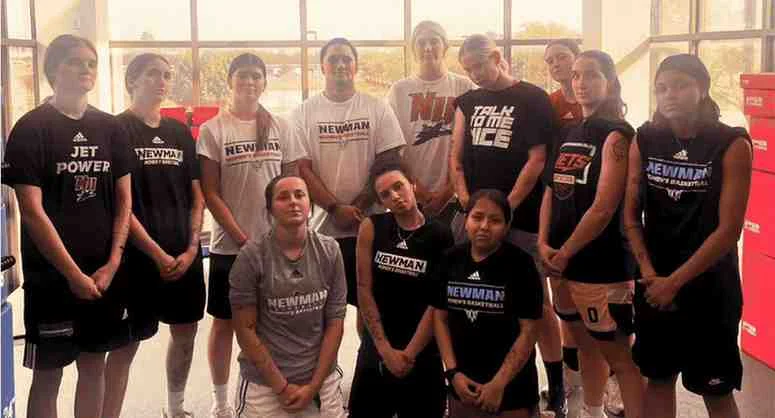
“Sometimes, it is what you don’t play.”
Musicians throw this quote around quite a bit. I don’t know if it came from Miles Davis or Keith Richards or BB King, but it is a reference to what makes a musician great. Davis was talking about hitting just a few notes in his music, compared to many less-memorable jazz musicians who may play too many. Richards was talking about too many effects that would affect his tone.
And we all know BB King, one of the greatest guitarists of all time. Most of his solos are just five notes. Here they are. In most cases, people knew it was him in one note, hit just right.
AC/DC can groove on one note better than anyone. Or a true musical genius can put “simply too many notes” in music and still make them work, like Mozart (in a quote from the movie Amadeus). Eddie van Halen also found a way as well. But how often do you go back and listen to Joe Satriani, Steve Vai, or Dream Theater—all his equals? They are terrific musicians, but their music doesn’t seem to stay with you.
Why my musical rant? Recently, an athlete quit our track team. Of course, he didn’t come to me about it but talked to another coach instead. (See, I have the same problems as the rest of you .) He said he could do all of the stuff at home that we do at practice. I thought about what he said. While it may be true, the real magic is knowing when to do any given exercise and when not to. Like the above analogy, the good ones know what to play and when, while the others throw everything into the mix.
To start with, what is essential to your sport? What are you trying to do? Track? That is easy: run or jump. Football? Basketball? They are all sports of movement and explosion. So, more of the same, with agility added into the mix. Break that down further and start looking at movement patterns. Once an athlete has mastered the basic movement pattern, add some complexity.
Take, for example, the ankle rocker and foot complex. We start with basic exercises, like a simple single-leg shallow squat with the toes pulled back. Once the athlete reaches the appropriate depth, we may add uneven surfaces, closed eyes, or just one closed eye. At this point, we start moving with shuffle walks or stair climbs.
All of this will build into ankle rocker jumps and starts. While building on the advanced exercises, we add multidirectional movements, such as single-leg squats with the feet turned out but the knee not tracking the toes. The downfall of a fast straight-ahead sprinter may occur when they have a good range of motion with the knee over the toe, but they break down when they lack the range of motion in another direction.
My track team had a similar experience with workouts this year. Because my sprinters are football players, I had to keep some upper body lifting. But we mostly got rid of lower body lifting because our goal was to run fast.
There is a caveat to this statement. We are a small school with limited facilities. We used the kBox once a week. Because I only have two kBoxes and 30 guys, we kept it to just squats and RDLs to get people through. The rest of our workouts were flys or starts in short hallways. On the few relatively warm days early in the year (above 40 degrees), we went outside to run 150s or 23-second runs. Once the weather truly warmed up, we changed to perfect 40 workouts and 150s. The perfect 40 starts with small segments of a 40-yard dash and gradually expands. So we start with a block 10 and fly 10 and move out to 20s. Then a block 30 and fly 10, which of course eventually turns into a 40-yard dash.
Here are the results. These were all timed electronically with a touch pad and a beam. The average improvement is 0.20 over a 16-week period. I had similar results with a football team of 70 players which I will write about when we finish the cycle. These results aren’t from all of the fancy exercises that I know. I cut it down to the bare essentials of what I needed and stayed with it until I didn’t need it any more. Prime time runs are great, but why do them if the athlete is already displaying what the drill is intended to do? So, the results are from what you don’t do, which sometimes includes doing nothing.
| Name | 40 yd dash Wk 1 | 40 yd dash Wk 16 | Improvement |
| West | 4.98 | 4.57 | 0.41 |
| Foster | 5.12 | 4.74 | 0.38 |
| Reilley | 5.32 | 4.97 | 0.35 |
| O’Connor, D | 5.42 | 5.13 | 0.29 |
| Pendergast | 6.33 | 6.04 | 0.29 |
| Johnson | 5.29 | 5.05 | 0.24 |
| Rodriguez | 5.44 | 5.20 | 0.24 |
| Sheppard | 5.39 | 5.20 | 0.19 |
| Antonelli | 5.37 | 5.19 | 0.18 |
| Rauen | 5.39 | 5.21 | 0.18 |
| Quaglia | 5.08 | 4.91 | 0.17 |
| Harris | 4.98 | 4.82 | 0.16 |
| Zaveri | 5.63 | 5.51 | 0.12 |
| O’Connor, R | 5.38 | 5.27 | 0.11 |
| Hollingshed | 4.83 | 4.73 | 0.10 |
| Embrey | 4.97 | 4.88 | 0.09 |
| Orlando | 5.29 | 5.21 | 0.08 |
| Pitchford | 5.20 | 5.12 | 0.08 |
I think this situation is layered into another group I am currently working with: 16-year-old traveling basketball players. This is a great group of guys who come once a week to work out with me. Of course, jumping, first-step quickness, and agility are their goals. As I do with everyone, we measure weekly.
But unlike most of my athletes, they aren’t going up at the same rate that I usually get. Their lack of improvement concerned me and I learned that they play at least once every day of the week. They practice with their high school team on Tuesday and Thursdays at 6 in the morning. Their evening schedule includes practice for their AAU team, individual coaching, and shoot-arounds.
Their weekend includes a travel schedule more grueling than NCAA or NBA teams. They play games at a number of locations, some of which require extensive driving. A few also play football, which adds still more time to their already busy sports schedules.
And let’s not forget about school. Throw in some AP tests. And at do we have in music? I think it would sound like some atonal, dissonant composer, like Edgard Varèse.
It is too much. Fatigued reps are worthless. Will they be better basketball players if they stay on this schedule, where they don’t improve athletically and play tired all of the time and in some cases get injured? Or, can they sacrifice some gassers, full-court runs, and a few games to concentrate on athletic development and ballhandling skills? Or an even different idea: work on visual training? If a player can’t see the floor, he can’t be nearly as effective. Regardless, these athletes need some rest. It is what they are not going to do that will make them better players/athletes.




